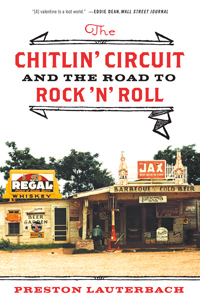The broke-down orange building at 2535 Park in Orange Mound is one of the silent witnesses to Memphis music history. It opened in 1946 as the W.C. Handy Theatre, with investors including future Holiday Inn founder Kemmons Wilson, and blackface entertainer Chalmers Cullins to “showcase the finest in Negro entertainment,” in the language of the day. They hired longtime Beale Street band booker Robert Henry to provide said entertainment.
It opened as a black movie house, and doubled as a venue for the leading touring black rhythm and blues and jazz orchestras of the day. By the early 1950s the Handy Theatre was in hot competition with the Hippodrome, a converted roller rink down on Beale, as the top nite spot in town.
In late 1950, a local disk jock named Bee Bee King helped his manager Robert Henry fill the hall for a Lowell Fulson show by repeatedly spinning Fulson records on WDIA, the first major black radio station. Fulson asked Bee Bee what he could to reward the kindness, and Bee Bee asked permission to record one of Fulson’s older tunes. Fulson said why sure. The song “Three O’ Clock Blues” hit the top of the black record chart for that young Memphis DJ, and launched B.B. King’s career on the chitlin’ circuit.
The Handy was a launchpad for A group of Delta cats, led by Ike Turner and Jackie Brenston, who stormed the theater in early April 1951, just as their Memphis-made hit “Rocket 88” went stratosphere. Ads for the show promised, “WE ARE GONNA TEAR THE HOUSE DOWN.” With support from white DJ Dewey Phillips and attention in the white daily Commercial Appeal, the tune became a hit on both sides of the tracks. The group played white and colored shows at the Handy.
The poster below advertised a big revue featuring the great Wynonie Harris in a “Battle of the Blues” taking place April 4, 1953.
This was also a transitional moment in black comedy. Check out the lower right of the ad. “Crackshot” is a black blackface comedian, complete with white lip outlines. Looks like he fell off a minstrel show in 1890. The name below is that of a slightly more modern comedy stylist, a young fellow named Ray Moore from over in Ft. Smith, Arkansas. The world would come to know him as Dolemite. He was about 25 at the time of this show, and yet to make a name for himself, so to speak. As you can see, the Handy hosted special shows for the white audience as well.
The Handy indeed hosted the finest in African-American entertainment, and did so weekly. In early ’53 alone, Little Esther Phillips, Lionel Hampton, Duke Ellington, Lloyd Price, and Ivory Joe Hunter played the Handy.
The Handy Theatre became the Showcase Lounge in the late 1960s and, yes, showcased many of Memphis’ soul acts like the Bar-Kays. Today the building is full of holes and pigeons. Here’s what’s left of the old man now.





